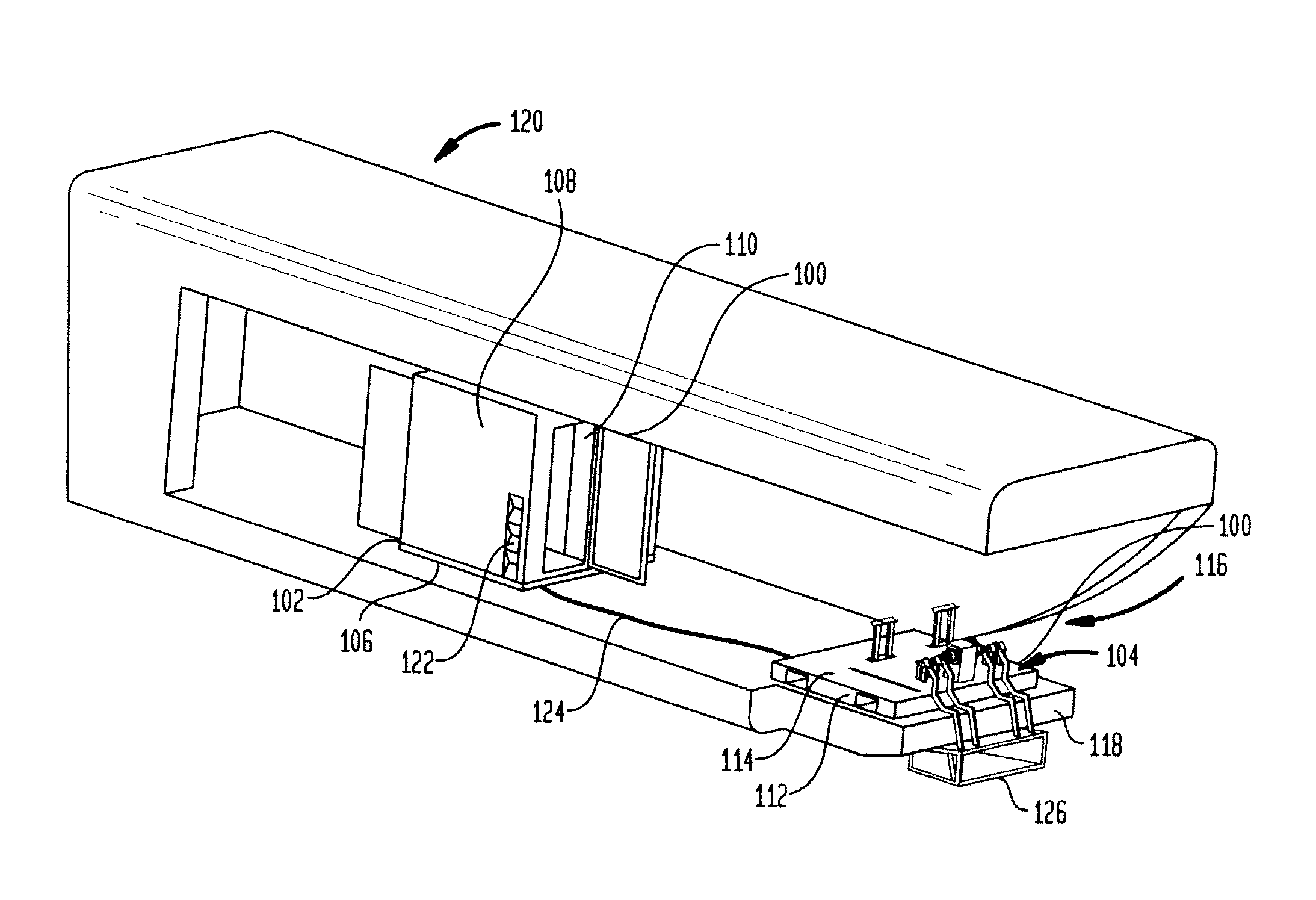Aerial sensor pod deployment system
a technology of sensor pods and deployment systems, which is applied in the field of sensor pod deployment systems, can solve the problems of severely limiting the field of view capabilities of sensors on the sensor pods, and the limited data collected from such sensors, so as to maximize the mission flexibility, stability and structural soundness, and the effect of reducing the angle of the sensor pods
- Summary
- Abstract
- Description
- Claims
- Application Information
AI Technical Summary
Benefits of technology
Problems solved by technology
Method used
Image
Examples
Embodiment Construction
[0031]The present invention is directed to a roll-on / roll-off system for deploying a sensor pod out an opening on an aircraft such that sensors mounted to the sensor pod have an increased or unobstructed field of view. With reference to the drawings, and in particular to FIG. 1, an embodiment of an aircraft-borne sensor pod deployment system 100 comprises an operator station 102 and a sensor pallet system 104. The operator station 102 comprises an operator station base platform 106, a shelter box 108, and an operator station computer 110. The sensor pallet system 104 comprises a sensor pallet base platform 112 and a sensor pod 126. The operator station 102 is preferably positioned inside a fuselage or cargo hold of an aircraft 120. The sensor pallet system 104 is preferably positioned near the operator station 102 inside the aircraft 120, and also near an opening 116 on the aircraft 120, such as near the opening 116 created by the lower cargo ramp and upper cargo door in the rear of...
PUM
 Login to View More
Login to View More Abstract
Description
Claims
Application Information
 Login to View More
Login to View More - R&D
- Intellectual Property
- Life Sciences
- Materials
- Tech Scout
- Unparalleled Data Quality
- Higher Quality Content
- 60% Fewer Hallucinations
Browse by: Latest US Patents, China's latest patents, Technical Efficacy Thesaurus, Application Domain, Technology Topic, Popular Technical Reports.
© 2025 PatSnap. All rights reserved.Legal|Privacy policy|Modern Slavery Act Transparency Statement|Sitemap|About US| Contact US: help@patsnap.com



